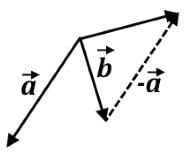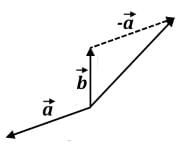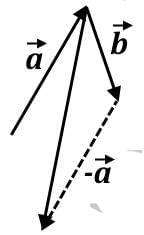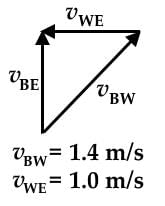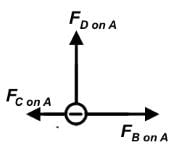Test: Vectors and Scalars - MCAT MCQ
10 Questions MCQ Test Physics for MCAT - Test: Vectors and Scalars
Which of the following vector combinations will result in the least amount of displacement? (Note: Vectors  have magnitudes double that of vectors
have magnitudes double that of vectors 
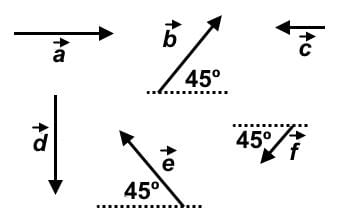
 have magnitudes double that of vectors
have magnitudes double that of vectors 

Which of the following vector combinations will result in the greatest displacement?
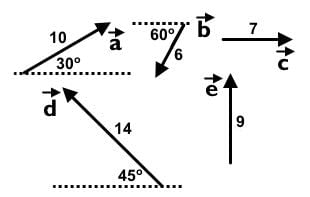

Which of the following statements correctly identifies an example of the respective scalar or vector product processes?
I. Vector and scalar : torque
II. Vector and vector : magnetic force
III. Scalar and scalar : power
I. Vector and scalar : torque
II. Vector and vector : magnetic force
III. Scalar and scalar : power
Which of the following is NOT considered a scalar quantity?
Which of the following is NOT considered a vector quantity?
Which of the following most accurately represents the resultant vector 

Which of the following combinations for the vector  will result in the greatest magnitude? (
will result in the greatest magnitude? ( is 10 units long and
is 10 units long and  is 15 units long)
is 15 units long)
The portion of the Mississippi River has a velocity of 1.0 meters per second. In still water, the ferry travels with a velocity of 1.4 meters per second. The ferry must transport the residents directly across the 1600 meter river span. Which of the following correctly describes the motion of the ferry?
Which of the following best represents the resultant electrostatic force on qA due to the other charges? (The formula for electrostatic force is  where q is a test charge, Q is the source charge, and r is the distance between their center of masses.)
where q is a test charge, Q is the source charge, and r is the distance between their center of masses.)
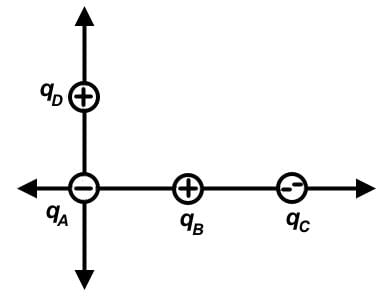
Aisha, Saul, and Lorenzo are playing a tug-of-war. Saul and Lorenzo are pulling at 90° to each other, while Aisha is pulling with 20 N on her rope at an angle (90 + θ)° from Lorenzo. Given that θ = arctan(1.33), what are the magnitudes of force with which Saul and Lorenzo must pull in order to keep this system in equilibrium? (Figure may not be drawn to scale.)
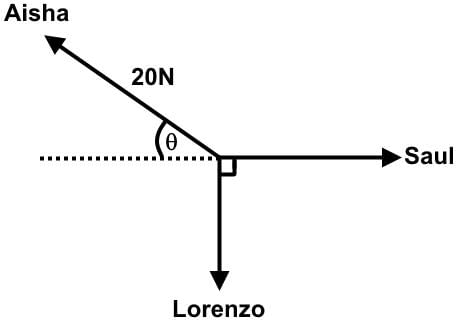
|
158 videos|21 docs|21 tests
|


 are half the magnitude of vector
are half the magnitude of vector  By drawing out
By drawing out  we can see that the displacement is somewhat large:
we can see that the displacement is somewhat large: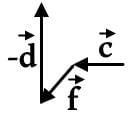
 , we can see that displacement is not large, but could be closer to zero:
, we can see that displacement is not large, but could be closer to zero: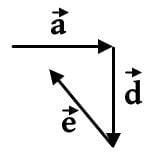
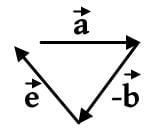

 let’s pick 10 for the magnitude of each vector, and resolve all the vectors into the x and y direction. In a 45 − 45 − 90 triangle, remember that the sides are in a proportion of 1 : 1 : √2 so with the hypotenuse as 10 units, the x and y components are 5√2, units. In the x-direction, the x component vectors
let’s pick 10 for the magnitude of each vector, and resolve all the vectors into the x and y direction. In a 45 − 45 − 90 triangle, remember that the sides are in a proportion of 1 : 1 : √2 so with the hypotenuse as 10 units, the x and y components are 5√2, units. In the x-direction, the x component vectors  overlap and add up to 10 √2, which is opposed by vector
overlap and add up to 10 √2, which is opposed by vector  , with, vector, on top, with a magnitude of 10.
, with, vector, on top, with a magnitude of 10.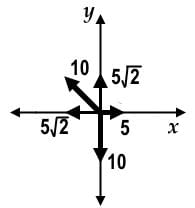
 cancel each other out. The resultant vector points in the negative y-direction with an approximate magnitude of 4 since √2, is approximately equal to 1.4.
cancel each other out. The resultant vector points in the negative y-direction with an approximate magnitude of 4 since √2, is approximately equal to 1.4.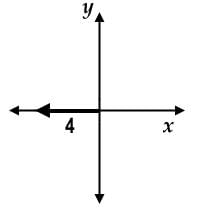
 let’s pick 10 for the magnitude of vectors
let’s pick 10 for the magnitude of vectors  and 5 for the magnitude of vector
and 5 for the magnitude of vector  resolve all the vectors into the x and y components. Vector
resolve all the vectors into the x and y components. Vector  resolves into an x and y components with magnitudes of 5√2 units:
resolves into an x and y components with magnitudes of 5√2 units: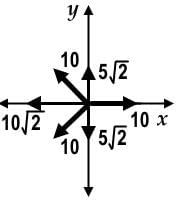
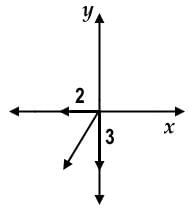
 can be drawn like the following:
can be drawn like the following: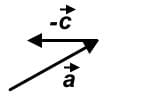
 can be drawn like the following:
can be drawn like the following: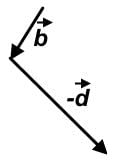
 can be drawn like the following:
can be drawn like the following:
 can be drawn like the following:
can be drawn like the following: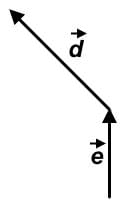
 and since
and since  is much longer than
is much longer than  the vector combination
the vector combination  will have the greatest displacement.
will have the greatest displacement.
 can be constructed by taking the component of
can be constructed by taking the component of  in the direction of
in the direction of  and multiplying it times the magnitude of
and multiplying it times the magnitude of  and it can be expressed as AB cos θ.
and it can be expressed as AB cos θ. can be constructed by taking the product of the magnitudes of
can be constructed by taking the product of the magnitudes of  multiplied by the sine of the angle between them.
multiplied by the sine of the angle between them. the vector sum
the vector sum  is obtained by placing them head to tail and drawing the vector from the free tail to the free head. A vector difference is equivalent to a vector sum with the orientation of the second vector reversed.
is obtained by placing them head to tail and drawing the vector from the free tail to the free head. A vector difference is equivalent to a vector sum with the orientation of the second vector reversed.
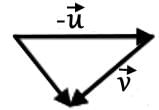
 but it doesn't follow the head-to-tail rule.
but it doesn't follow the head-to-tail rule.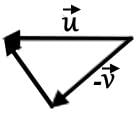
 but it doesn't follow the head-to-tail rule.
but it doesn't follow the head-to-tail rule.


 must be flipped for the subtractive process. Each one must be drawn out to decide what one has the greatest magnitude.
must be flipped for the subtractive process. Each one must be drawn out to decide what one has the greatest magnitude. should be placed at the head of vector
should be placed at the head of vector  to obtain the resultant vector. The vector combination only shows the greatest displacement in the x-direction, which is 15 units:
to obtain the resultant vector. The vector combination only shows the greatest displacement in the x-direction, which is 15 units:
